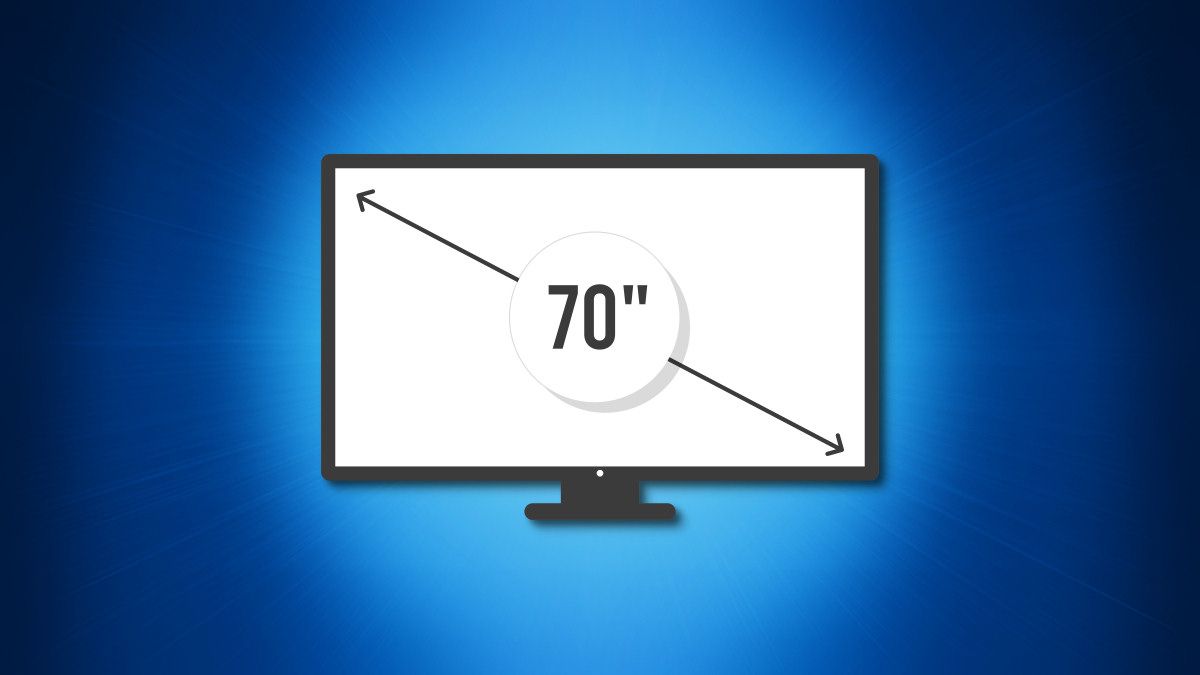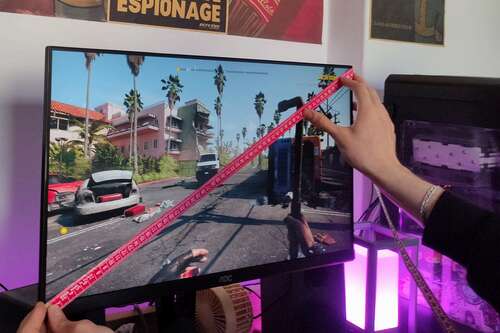Key Takeaways
- Screen size is measured diagonally from one corner to the opposite corner using a tape measure
- Curved monitors are measured the same way as flat monitors, but the curve must be taken into account by laying the tape measure flat against it.
- Aspect ratio and resolution don’t affect how you measure the monitor, but they affect other factors, such as the display surface area and sharpness.
Got an old monitor that you don’t know the size of? Your first instinct might be to grab a measuring tape and take its width, but that won’t give you the correct size. We’ll show you how to do it correctly and without scratching the screen.
Screen Size Is Measured Diagonally
When you look at the specifications of a monitor, the most prominent feature is its diagonal size, typically denoted in inches; the measurement is often in the title of the product listing itself. For example, check out this Amazon listing for the Sceptre E255B-FWD240 24.5-inch Gaming Monitor for a real-world example.
The diagonal size or length is the measurement of the line from one corner of the screen to the opposite corner. You can measure the diagonal from any corner as long as you make sure to go to the opposite corner to get the correct length.
You shouldn’t mistake the diagonal length for the screen’s width or height, as those are separate measurements. If you work with a limited desk size, you should pay close attention to those dimensions as well, as you can’t deduce the width or height from the diagonal length alone.
How to Measure Screen Size
The most reliable and arguably the quickest way to know a monitor’s screen size is to check the specifications sheet of the monitor. You can check the box it came in or look up the model name online.
If that isn’t an option, you can easily measure it with a standard tape measure. I strongly recommend using a body measuring tape made of cloth that doesn’t have any metal bits on it, as metal can easily leave deep marks and scratches on the plastic display cover. You could also try a plastic ruler, but it can leave scratches too, and you probably don’t have one long enough to measure the screen size in one go.
Once you’ve obtained a tape measure, lay it flat on any corner of the screen and pull it taut against the monitor. Drag the other end to the opposite corner and read the measurement. Make sure to only measure the corners of the display; ignore the bezels and black bars around it.
I used a metric tape measure and found that my display has a diagonal length of approximately 60.5 cm (23.8 inches), which is the exact size on the specifications sheet of my AOC 24G2U.
An alternative way to measure the diagonal length is with the help of the Pythagorean theorem. That’s right—your eighth-grade geometry classes are finally starting to pay off. To calculate the diagonal length, measure the width and height of the monitor. Take the square root of the sum of the squares of the (horizontal) width and (vertical) height. Or you could just type in the width and height in a Pythagorean theorem calculator.
If you want to measure the display’s surface area instead, multiply the width by the height, and the number you get is the total surface area. A display with a larger surface area technically equals a larger screen.
What About Curved Monitors?
You measure curved monitors the same way you’d measure a flat monitor. The only difference is that you must take the curve into account by laying the tape measure flat against the surface. If you need precise measurements, you might want to check the monitor’s specs sheet instead.
Don’t Forget About the Aspect Ratio and Screen Resolution
Aspect ratio tells you the ratio between the width and height of your screen. For instance, a monitor with an aspect ratio of 16:9 indicates that for every 16 units of width, there are 9 units of height. It doesn’t tell you the actual screen resolution but rather the between the width and height. A 16:10 display would indicate a monitor with a slightly taller height. Ultrawide monitors often have an aspect ratio of 21:9.
Screen resolution tells you how many pixels there are on the screen. As with aspect ratio, the first number tells you how many individual pixels there are in its width, and the second is for the height. A 1920x1080p display has 1920 horizontal and 1080 vertical pixels, with a total pixel count of just over 2 million.
Keep in mind that the display size listed in the product specifications is measured diagonally. If you want to measure a display to figure out whether it’ll fit on your desk, you might want to check the width and height as well, as the diagonal length can be slightly misleading, especially with ultrawide and curved displays. And if you’re shopping for a new monitor, there’s a list of other factors you should pay attention to in addition to size, aspect ratio, and resolution.



